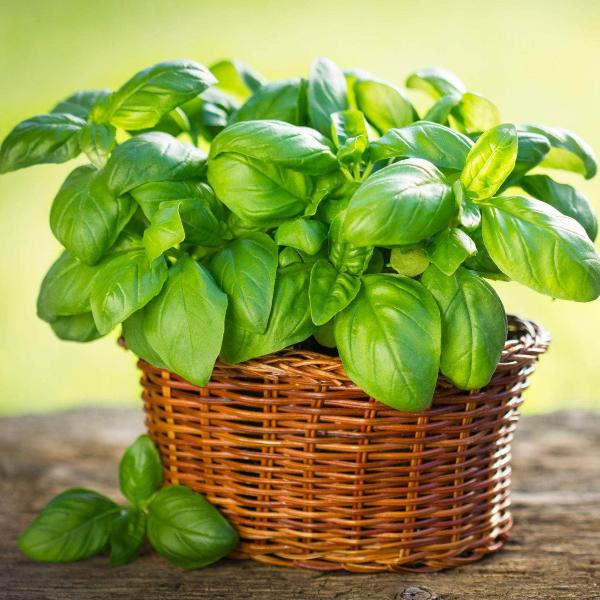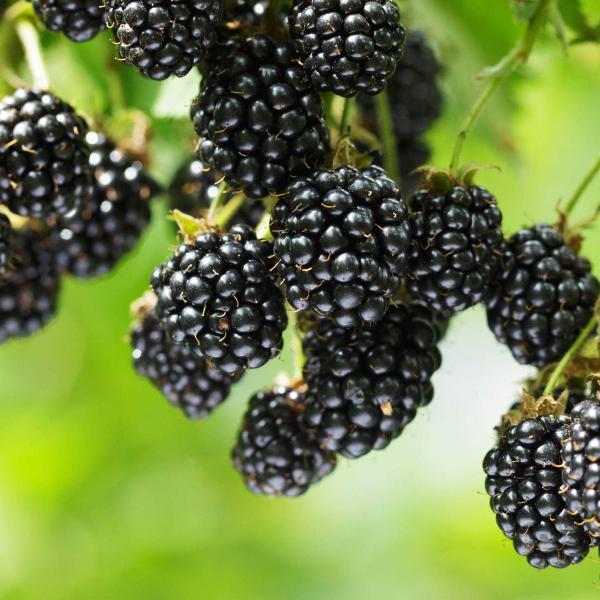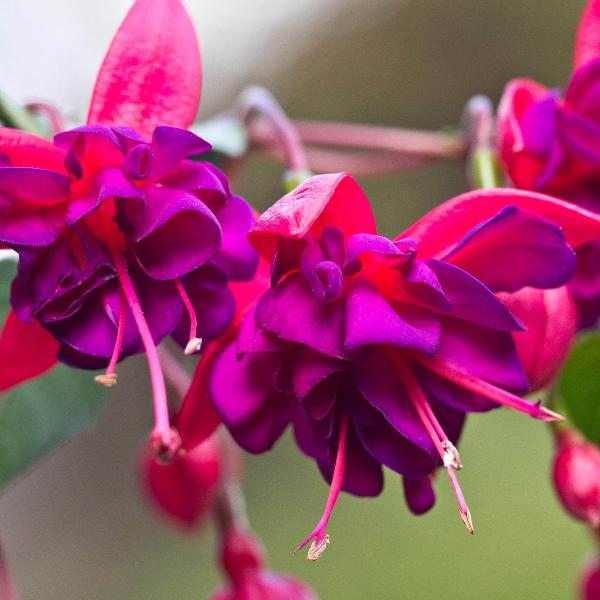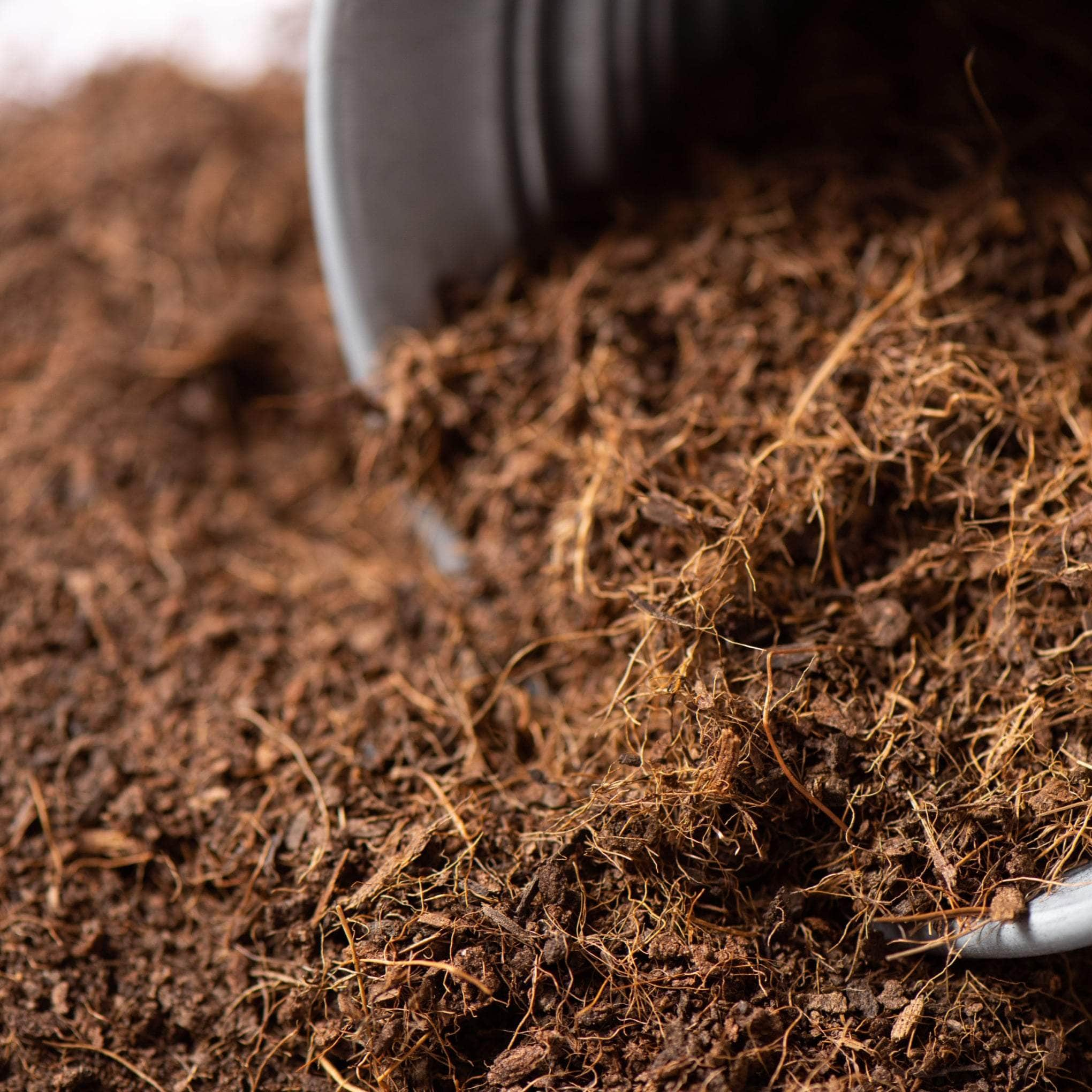Gladioli Growing Essentials: Your Complete Guide
Welcome to our comprehensive guide on how to grow Gladioli, the show-stopping summer bloom also known as the Sword Lily. This guide is designed to help gardeners of all levels, from the novice to the seasoned green thumb, to successfully plant, grow, and care for these vibrant flowers.
From understanding the anatomy of a Gladiolus plant to exploring popular varieties, we'll walk you through every step of the process. We'll delve into the details of planting Gladioli corms, ensuring the soil is just right, and providing the perfect amount of sunlight.
We'll also share tips on how to protect your Gladioli during the winter months and the best corms for your garden.
Whether you're looking to create a stunning cut flower display or simply add a splash of colour to your garden, this guide will equip you with the knowledge you need to grow Gladioli with confidence. So, let's dive in and start our journey towards a garden filled with the spectacular beauty of Gladioli.
Understanding Gladioli: An Introduction

Diving into the world of Gladioli, we find ourselves amidst a sea of vibrant colours, unique shapes, and fascinating botanical dynamics. This section aims to introduce you to the captivating universe of this flower, often referred to as the 'sword lily'.
From understanding the anatomy of a Gladiolus plant to appreciating the beauty it brings to our gardens, we'll explore the complete gladiolus flower guide. So, let's embark on this journey to grow gladiolus in our own little green spaces.
The Beauty of Gladioli
The beauty of Gladioli, often referred to as the 'sword lily' due to its distinct shape, is a captivating sight to behold. They are marvels of nature, renowned for their flamboyance and the flurry of colours they bring to the summer garden.
Each flower on the Gladiolus spike opens to reveal a delicate funnel structure that is a wonder in itself. This structure is what provides the plant with its signature look, resulting in what is now widely recognised as the classic 'gladiolus' shape.
Ranging from vibrant hues to more subtle shades, the colour palette of Gladioli is a celebration of diversity. This extends to the variety in size, too, from the large hybrid gladioli to their smaller, equally enchanting, counterparts.
Gladioli are more than just a delight for the eyes. They are also relatively easy to grow, asking for little more than a sunny, well-drained site and slightly acidic soil. That's the enchanting beauty of Gladioli; simple care, spectacular results.
The Anatomy of a Gladiolus Plant
Understanding the anatomy of a gladiolus plant is key to successful cultivation. Let's explore some intriguing details of the gladiolus.
Corms: The flower we commonly refer to as the "bulb" of the gladiolus is, in fact, a corm—a thickened underground stem serving as a storage structure.
Leaves: Resembling miniature swords, the leaves of the gladiolus give the plant its Latin name, translating to 'little sword'.
Flower Spikes: Each gladiolus plant bears tall, upright spikes presenting individually opened blooms.
Blooms: The blooms themselves take on a funnel shape, opening uniformly from the base. Depending on the variety, their sizes can range from miniature to giant.
To sum it up, understanding the parts of the plant is the first step towards learning how to grow gladiolus efficiently. From the corm brimming beneath the soil to the detailed gladiolus blooms above, each part shines a light on the phenomenal botanical dynamics of this striking plant, making it a remarkable addition to any garden.
How to Plant Gladioli

Planting gladioli is a rewarding endeavour that brings vibrant colours and a touch of elegance to your garden. This section will guide you through the process of planting these beautiful flowers, from choosing the right location to understanding the best time to plant and finally, a step-by-step guide to ensure your gladioli thrive. Whether you're a seasoned gardener or a beginner, this guide will equip you with the knowledge to successfully plant and nurture your gladioli.
Choosing the Right Location for Planting
Choosing the right location for planting gladioli is crucial for their growth and overall health. Gladioli are sun-loving plants native to the Mediterranean, which means they thrive in areas with ample sunlight. Therefore, when considering where to plant your gladioli corms, an ideal choice would be a spot that receives plenty of sunlight, either a sunny border or a container at the end of your garden or on the patio.
You should also ensure the soil in the chosen location is well-drained and moist, as gladioli prefer a moist yet well-drained environment. In case your garden soil is heavy, planting the corms on a layer of sharp sand or gravel can improve drainage, thus providing a conducive environment for your gladioli.
Flower pots are an excellent option if consistent sun exposure is a challenge in your garden. These pots can be easily moved to capture sunlight wherever it may be in your garden at any time. In summary, sun-soaked, well-drained soil is your aim when identifying the best locale for your gladioli.
At the end of the day, it is essential to remain flexible and adaptive to the needs of your plant, to ensure it thrives and brings colour and beauty to your garden.
The Right Time to Plant Gladioli
Gearing up to plant your gladiolus corms? Timing is an essential ingredient for the successful cultivation of these vibrant blooms. Gladiolus corms perform best when planted in spring, but the exact timeframe can vary depending on your location. Let me guide you to find the right time to embark on your planting journey.
For those living in colder regions where frost is a common occurrence, plant your gladioli directly into the ground in May. Take the onus to find out the time of the last expected frost in your vicinity. Planting can commence a fortnight before this date to optimally utilise the warming soil temperatures. If you reside in areas with a more forgiving climate, gladioli can be kick-started in pots as early as March.
Remember to position them in a cold yet bright, frost-free spot. A greenhouse is an ideal location. Should you want to stretch the display of your gladioli, plant a few corms every week from March onwards. Punctuating your planting like this offers a seamless transition of colour in your garden. But, keep tabs on the clock. The last call for planting gladioli is in July, any later and the blooms won't have enough time to flourish before the frost sets in again.
Armed with this knowledge, you're set to correctly time the planting of your gladioli. With every bloom, your efforts will be rewarded with their flamboyant display of colour. Happy gardening!
Step-by-Step Guide to Planting Gladioli
Here's an uncomplicated, step-by-step guide to planting glorious gladioli!
Preparation: Start by prepping the ground, making sure to choose a spot that sees the full sun. Loosen up the soil, enhancing it with copious organic matter to keep the soil moist.
Plant Gladioli Corm: Once prepped, plant your gladiolus corm pointy side up. Make sure to place each corm 3-4 inches apart and about 6 inches deep in the ground.
Watering: Now, get your watering can out. Regular watering is key to the healthy growth of Gladioli. Keep the water flow equivalent to 1 inch of rainfall, particularly in dry weather conditions.
Nurture: Resist the urge to cut off the post-bloom foliage. Allow it to completely wither and turn yellow before removing it.
Now sit back and enjoy the efflorescence of your labour come summertime!
How to Grow Gladioli

Growing Gladioli is a rewarding experience that can add a splash of colour and elegance to your garden. This section will guide you through the process of how to grow gladiolus, from planting to nurturing these beautiful flowers to full bloom.
Whether you're a seasoned gardener or a beginner, you'll find this guide helpful in your journey to grow gladioli. We'll cover everything from the ideal conditions for growth, including full sun exposure and well-drained soil, to the care required during the grow season. Let's dive in.
Caring for Gladioli During the Growing Season
During the growing season, the care taken towards your gladioli is integral to their overall development. If you're wondering how to grow gladiolus in the healthiest, most vibrant way imaginable, you're in the right place.
At the core of gladioli care lies watering. Regular watering throughout the growth phase is critical, particularly for those beauties potted or treading free-draining soils. Ensuring the water reaches their roots, a weekly douse is usually sufficient. This frequency is optimal as overwatering can be detrimental; hence, one massive glug per week is preferable to several miniature ones.
But it isn't all about just watering. Gladioli thriving in full sun can grow quite tall and might require additional support. A bamboo cane or any sturdy stake typically does the trick, maintaining the upright elegance of the flower stalk.
Feeding the gladioli is vital too, especially when they start flowering. Regular feeding during this stage enhances their overall health, ensuring they stand tall and produce radiant blooms, sealing the effort you've put into your flower grow and selection.
When caring for your gladioli, remember to adhere to these practices come the next grow season. You'll soon have a garden teeming with stunning cut flowers and vibrant gladiolus, a testament to the diligence that goes into creating a blossoming garden.
Common Problems and Solutions When Growing Gladioli
When aiming to grow flawless Gladioli, a couple of common problems can often present themselves. However, with the right care, one can easily overcome these issues; let's discuss a few.
Slugs: Slugs find Gladiolus especially appealing during their initial flowering phases. Regularly topping the soil with deterrents can thwart these pesky creatures. Opt for rough mulches, sharp grit, or even crushed eggshells.
Thrips: Another common issue is the tiny but troublesome Thrips, colloquially known as 'Thunderflies.' These insects tend to tarnish your prized gladioli foliage with mottled patches dotted with black spots. They typically thrive during hot, dry seasons, and a simple solution here is to mist your plants with water every few days, a measure that can discourage their activities.
The main key to prevent these issues is constant monitoring and timely action. With these simple solutions, you can fend off these challenges and enjoy steady success in your quest to grow gladioli.
Winter Protection for Gladioli

Winter protection for gladioli is a crucial aspect of their care, ensuring their survival and flourishing in the next grow season. This section will delve into the necessary steps to protect your gladioli during the colder months, whether you choose to leave them in the ground or store the corms for winter.
Understanding how to grow gladioli and provide winter protection is key to maintaining these beautiful bulb plants. Let's explore the best practices for winter protection for your gladiolus corms.
Preparing Gladioli for Winter
As winter begins to set in, your gladioli need some consideration. These bulb or corm plants are integral to your garden, but they may not withstand the colder months, especially in harsh conditions. Prior preparation for winter protection is vital to see your gladioli flourish.
Firstly, if you've decided to leave your corms in the ground, cut back the gladiolus corm's old stems in autumn. This will help it survive during winter. Pile on a thick layer of mulch over the area where the corms are. The mulch works as insulation, reducing the chances of your corms freezing in colder weather.
Everyone's gardening journey varies, and sometimes nature will surprise us. But if you follow these tips, you help your Gladioli thrive and make a colourful comeback next spring.
Storing Gladioli Corms During Winter
Here are some essential pointers to take into account when storing gladioli corms during the chilly winter months:
Wait for your gladioli plants to dry: Allow the plant to die down naturally and turn a straw-brown colour.
Lift the corms out of the soil: Carefully dig around the base of the plant, lift the corm and shake off any remaining soil.
Place your corms in ideal storage conditions: Store them in a dry, frost-free, and dark location. A dry box or container can suffice for this.
The goal is to protect the corms from frostbite and prepare them for the next grow season. Following these steps will ensure proper winter protection for your gladiolus flowers.
Choosing the Right Gladioli for Your Garden
When choosing the right gladioli for your garden, several considerations should be taken into account.
Colour and Height: Gladioli come in an assortment of colours and heights. It's vital to select ones that complement your garden's established aesthetic and don't disrupt the existing balance.
Corm Quality: Always inspect gladioli corms for signs of mould before buying. Healthy corms are essential for healthy plants. Discard any bulb or corm showing signs of this disease.
Location: These plants thrive in well-drained soil and a sunny location. Therefore, choose gladioli varieties that align with the conditions in your garden.
Care: Some varieties require specialist care. Opt for ones that match your gardening skills and time commitment.
Whether you're a seasoned gardener or new to the gladiolus world, choosing the right gladioli to grow can vastly improve your gardening experience and the beauty of your borders when summer arrives.
Exploring Gladioli Varieties

In the world of gladioli, there's a variety for every garden and every gardener. From the flamboyant Grandiflora hybrids to the hardy winter varieties, each type of gladiolus brings its own unique charm and character.
In this section, we'll delve into the fascinating world of gladioli varieties, exploring their unique features and what makes each one special. Whether you're a seasoned gardener or a beginner, this complete gladiolus flower guide will help you choose the perfect variety for your garden.
Popular Varieties of Gladioli
Grandiflorus Hybrids: These are large gladioli, famously loved by flamboyant Australian comedian Dame Edna Everage for their showiness and striking colours. They can reach up to 1.8m in height, boasting flowers up to 15cm in diameter.
Primulinus Hybrids: Characterised by their grace and elegance, these hybrids boast sword-like leaves and upright flower spikes, justifying the meaning of 'gladiolus' - 'little sword'.
Gladiolus byzantinus: Also referred to as Sword Lily, this hardy winter gladioli variety can withstand mild winters of up to -10°C, contributing colour and charm even in colder months.
Gladiolus communis: This versatile gladiolus can also cope with winter down to -10°C. It's perfect for year-round gardeners who want to see their garden bloom incessantly.
Please remember that the right variety for you will depend on various factors: your local climate, the amount of sunlight your garden receives, and the soil type. All these varieties are available as corms, which are easy to grow and care for.
Choosing the Right Variety for Your Garden
When it comes to growing gladioli, choosing the right variety goes beyond just picking your favourite colour. You need to bear in mind the height of the gladiolus and whether it is suitable for your garden setting.
The ‘sword lily', as it's also known, does best in moist, well-drained soil. Choose a variety that is not too sensitive to soil conditions if you're not able to provide this exact environment.
Embracing the Beauty of Gladioli in Your Garden

In conclusion, the journey to grow gladioli in your garden is a rewarding one. From the moment you plant the gladiolus corm, to the day you see the first flower bloom, the process is filled with anticipation and excitement. The vibrant colours and unique shapes of the gladioli flowers are sure to add a touch of elegance to your garden.
Remember, the key to a successful grow season lies in the details.
From ensuring the soil is well-drained and the plants receive full sun, to providing winter protection by lifting the corms and storing them properly. Each step is crucial in ensuring the health and beauty of your gladioli.
So, whether you're a seasoned gardener or a beginner, don't hesitate to embrace the beauty of gladioli in your garden. With the right care and attention, you'll be rewarded with a stunning display of flowers that will captivate all who see them.
Happy gardening!










